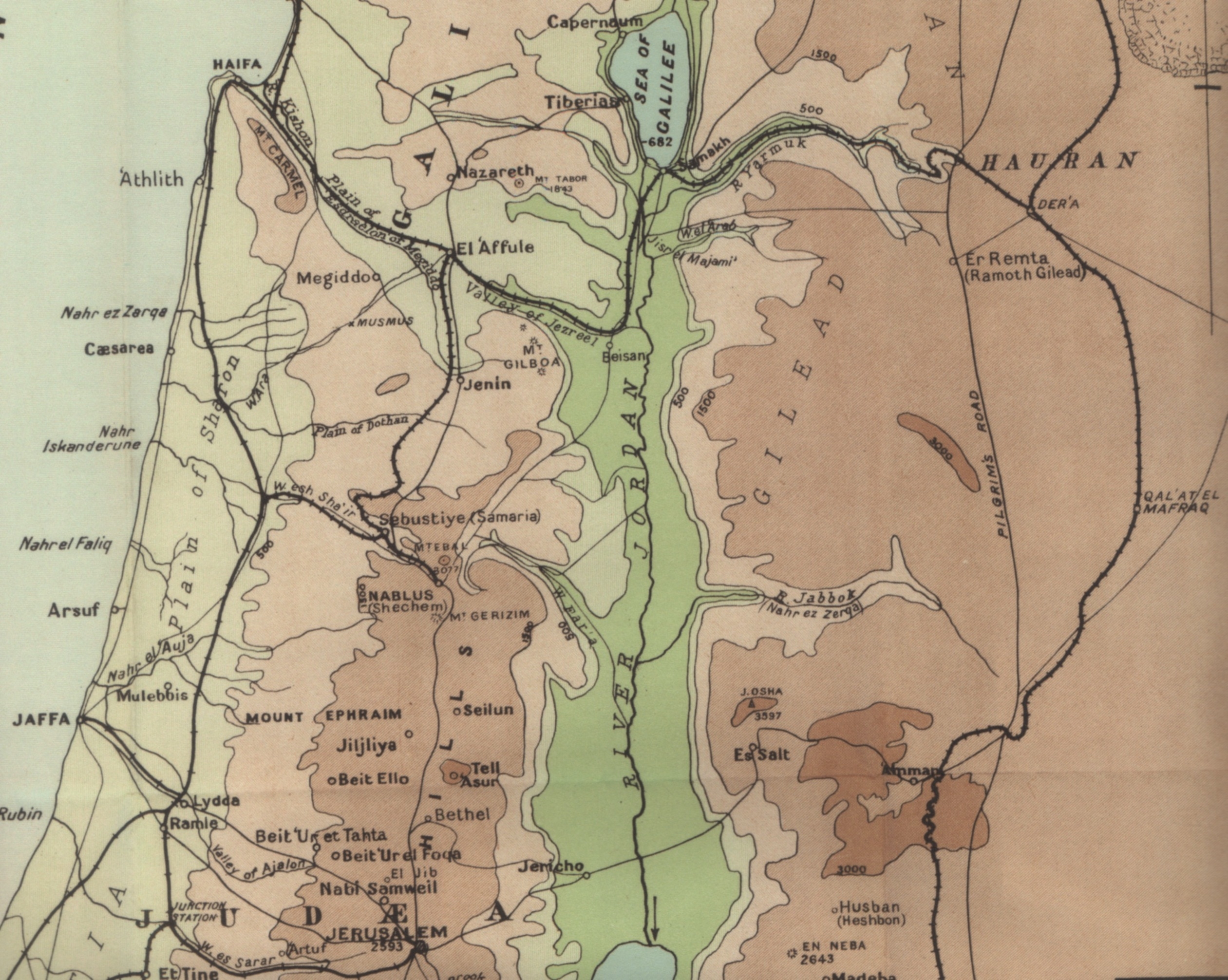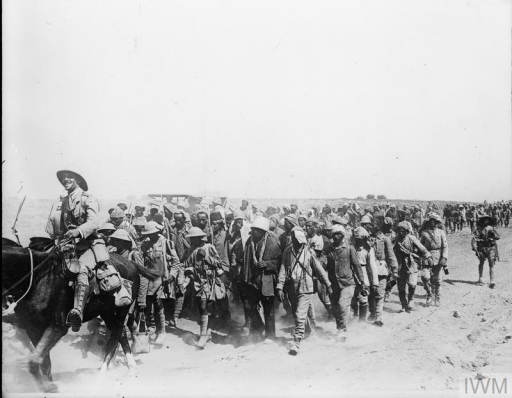Major Paul Knight on the Allied attack in September 1918 that dealt a fatal blow to the Central Powers in the Middle East.
Following General Allenby’s victory at Beersheba and Gaza in late-October 1917, his Egyptian Expeditionary Force had pushed on until they held a line north of Jaffa (captured 16 December 1917) to Jerusalem (occupied 9 December 1917). It would be a full nine months before he could resume his offensive, which resulted in the final and complete destruction of the Ottoman Army in Palestine during the closing weeks of the Great War.
Apart from the exhaustion of his army by the end of 1917 and the extreme difficulties of operating on the Judean Hills during the winter, Allenby also lost many of his best units to the Western Front in anticipation of the 1918 German Spring Offensive. Some divisions, like the 10th, 53rd, 60th and 75th, underwent a process of ‘Indianization’ which saw the four British battalions in a brigade system replaced by that of one British and three Indian battalions. Other divisions were sent to the Western Front complete, to be replaced by the Indian 3rd (Lahore) and 7th (Meerut) Divisions. This process with the necessary training and network building naturally took time.
By the middle of September 1918, the Egyptian Expeditionary Force (EEF) consisted of the Desert Mounted Corps (DMC) and XXI Corps on the Mediterranean coastal plain with XX Corps holding the Judean Hills and Jordan Valley. Also in the Judean Valley but facing east, was General Chaytor’s force based around the Australian and New Zealand Mounted Division. The Arab Northern Army under Prince Feisal was operating in the region of Deraa.
Attempting to contain the EEF was the Yilderim Army Group commanded by the German General, Liman von Sanders, and consisting of three armies – 8th Army at Tul Karm faced the DMC and XXI Corps; 7th Army at Nablus faced XX Corps; 4th Army at Es Salt faced Chaytor’s Force and the Northern Arab Army. Von Sanders, like Allenby, had to contend with being low on the list of strategic priorities for his political masters. In this case, priority went to recover territory lost to the Russians rather than saving their Arab empire.
Deception
In every respect, Allenby had a superiority. Despite this, for success in the forthcoming battle, Allenby utilised a deception plan to convince von Sanders that he would attack in the Jordan Valley rather than along the coast, and secondly used his assets to destroy the Ottoman command and control network which would paralyse the Ottoman response. Allenby’s plan was assisted by von Sanders’ disposition. His headquarters at Nazareth was a long way behind the lines which made communications with 7th and 8th Armies vulnerable to being cut. At the same time, those two armies were supplied by a single railway which, if severed, would cut them off from resupply, and escape.

Map of the Megiddo campaign (By Cyril Falls, A. F. Beck, via Wikimedia Commons/public domain)
Allenby’s offensive began on the night of 18-19 September 1918 with a heavy bombardment by XX Corps to reinforce the idea of a Jordan Valley offensive. After midnight, the RAF bombed 7th and 8th Army HQs while the single Handley Page bomber destroyed the telephone exchange at Afula, breaking communications between von Sanders and the two Army HQs.
Meanwhile, on the coast, all was quiet as the five British and Indian divisions of XXI Corps advanced along a 15 mile front. At 0430 hours, an intense bombardment supported by the Royal Navy smashed the Ottoman front line and the infantry rolled through. The Ottoman XXII Corps closest to the coast ceased to exist. The infantry now pivoted on the right, opening like a door, to allow the three divisions of the DMC through. The way for the Australian 5th Light Horse Brigade was now open towards Tul Karm and HQ Ottoman 8th Army. The Light Horse circled north of the town, cutting it off and instilling panic in the rear areas; the town was captured by 60th Division at 1700 hours after an advance of more than 16 miles.
Collapse
With communications cut and the Ottoman Air Force grounded by the RAF patrolling over them, von Sanders was entirely in the dark as 8th Army collapsed.
The advance of the DMC continued on September 20. 4th Cavalry Division was tasked with capturing the Musmus Pass. A spectacular charge by the Indian 2nd Lancers secured the northern end of the pass at El Lajjun (the Biblical Megiddo) to allow the DMC to pour through. Von Sanders himself narrowly escaped capture when elements of 5th Cavalry Division reached Nazareth. The two infantry corps maintained their pressure. 7th Army attempted to escape on the 21st through Wadi Far’a but was spotted by the RAF who destroyed its vehicles and scattered the personnel. On September 23, a charge by two squadrons of Jodhpur Lancers led to the capture of Haifa. By the 25th, both 7th and 8th Armies had been destroyed and von Sanders was attempting to create a defensive position with 4th Army, across the river Jordan which was being harried by Chaytor’s force and the Arab Northern Army. The Battle of Megiddo was over, the road to Damascus and Syria lay open as the end of the First World War approached.
Allenby’s success at Megiddo lay in superior numbers, a deception plan and the targeting of Ottoman assets which both paralysed his ability to respond and undermined his will to fight, resulting in the complete destruction of the Yilderim Army Group in just a week. It was a calamity the Ottoman Army would never recover from.
Major Paul Knight PhD VR is author of ‘The British Army in Mesopotamia 1914-1918’ and ‘Liverpool Territorials in the Great War’, and he is the First World War project officer for the Army in the North West of England.
Also by Paul Knight in Centenary News:
Baghdad falls to British/Indian forces.
General Sir Frederick Maude – the unknown victor in the Middle East.
Kut-al-Amara, how & why the siege began.
The defence of Givenchy, holding the German Spring Offensive, April 1918.
Lancastrians re-formed as the British Army’s 55th Division on the Western Front.
© Centenary News & Author
Images courtesy of Imperial War Museums, © IWM Q12326 (prisoners under escort)
Map of Megiddo campaign, Wikimedia Commons (public domain): Cyril Falls, A. F. Beck, History of the Great War Based on Official Documents by Direction of the Historical Section of the Committee of Imperial Defence Military Operations Egypt & Palestine from June 1917 to the end of the War Volume 2 Part 1
